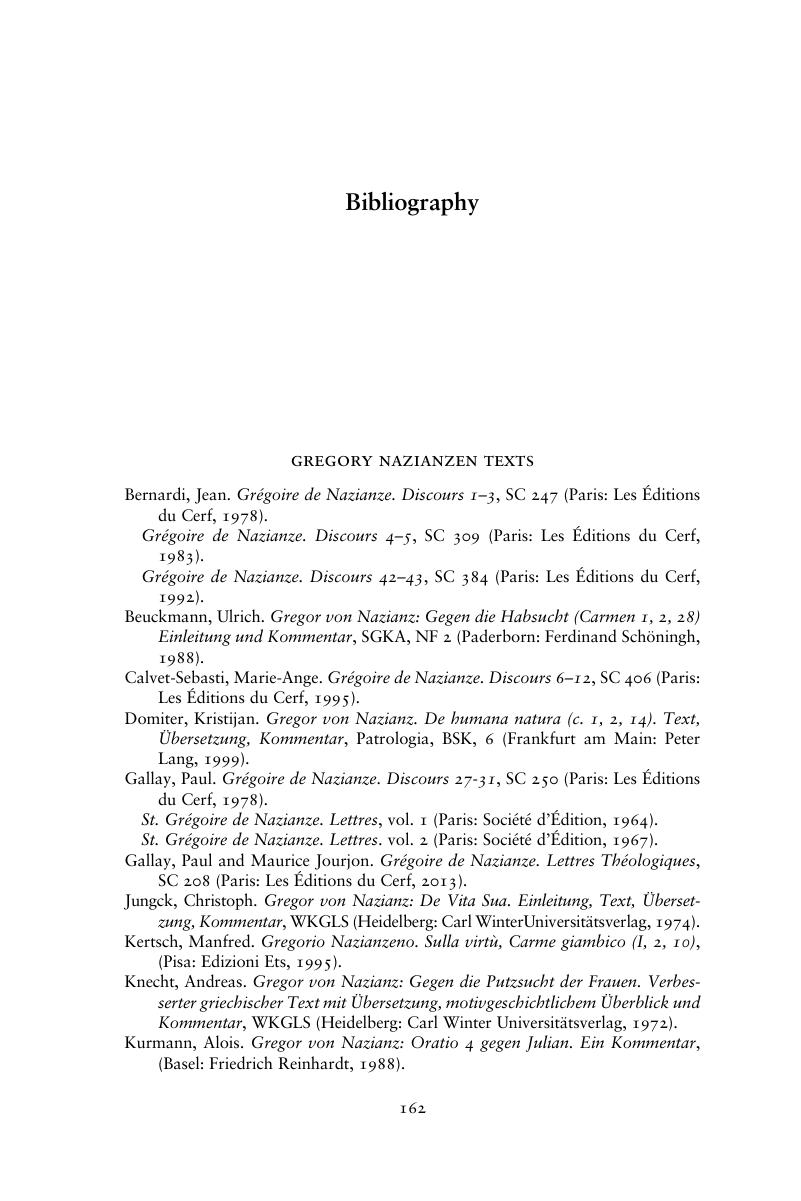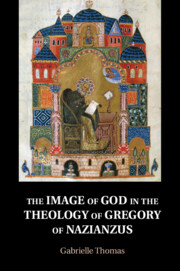Book contents
- The Image of God in the Theology of Gregory of Nazianzus
- The Image of God in the Theology of Gregory of Nazianzus
- Copyright page
- Epigraph
- Contents
- Preface
- Abbreviations
- Introduction
- 1 Being an Image of God
- 2 Jesus Christ, the Identical Image
- 3 Creation of the Image of God
- 4 The Image of God and the Devil
- 5 Theosis and the Divine Image
- Conclusion
- Appendix
- Bibliography
- General Index
- Scripture Index
- References
Bibliography
Published online by Cambridge University Press: 25 May 2019
- The Image of God in the Theology of Gregory of Nazianzus
- The Image of God in the Theology of Gregory of Nazianzus
- Copyright page
- Epigraph
- Contents
- Preface
- Abbreviations
- Introduction
- 1 Being an Image of God
- 2 Jesus Christ, the Identical Image
- 3 Creation of the Image of God
- 4 The Image of God and the Devil
- 5 Theosis and the Divine Image
- Conclusion
- Appendix
- Bibliography
- General Index
- Scripture Index
- References
Summary

- Type
- Chapter
- Information
- The Image of God in the Theology of Gregory of Nazianzus , pp. 162 - 189Publisher: Cambridge University PressPrint publication year: 2019



